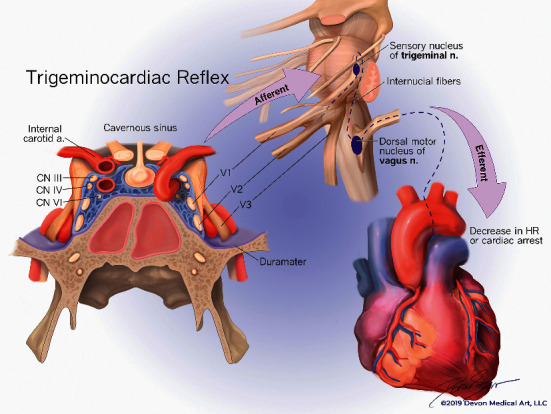Intra-Arterial Lidocaine Blunts the Trigeminocardiac Reflex during Endovascular Treatment of a Carotid-Cavernous Fistula.
Q3 Medicine
Case Reports in Anesthesiology
Pub Date : 2021-01-05
eCollection Date: 2021-01-01
DOI:10.1155/2021/2342347
引用次数: 6
Abstract
Carotid-cavernous fistulas (CCFs) are vascular shunts that allow blood to flow from the carotid artery or its branches into the cavernous sinus. Endovascular embolization is the treatment modality of choice. The trigeminocardiac reflex (TCR) is a vagally mediated reflex that can lead to hemodynamic instability. It can be activated during embolization procedures due to the proximity of vagal efferent neurovascular structures within the cavernous sinus. This case report describes the intraoperative management of recurrent, profound bradycardia due to TCR during endovascular CCF embolization.

动脉内利多卡因在颈海绵状瘘血管内治疗过程中减弱三叉心反射。
颈海绵状瘘(CCFs)是血管分流,允许血液从颈动脉或其分支流入海绵窦。血管内栓塞是首选的治疗方式。三叉心反射(TCR)是一种迷走神经介导的反射,可导致血流动力学不稳定。由于海绵窦内的迷走神经传出神经血管结构邻近,它可以在栓塞过程中被激活。本病例报告描述了在血管内CCF栓塞术中由于TCR引起的复发性、深度心动过缓的术中处理。
本文章由计算机程序翻译,如有差异,请以英文原文为准。
求助全文
约1分钟内获得全文
求助全文
来源期刊

Case Reports in Anesthesiology
Medicine-Anesthesiology and Pain Medicine
CiteScore
1.40
自引率
0.00%
发文量
19
审稿时长
12 weeks
 求助内容:
求助内容: 应助结果提醒方式:
应助结果提醒方式:


